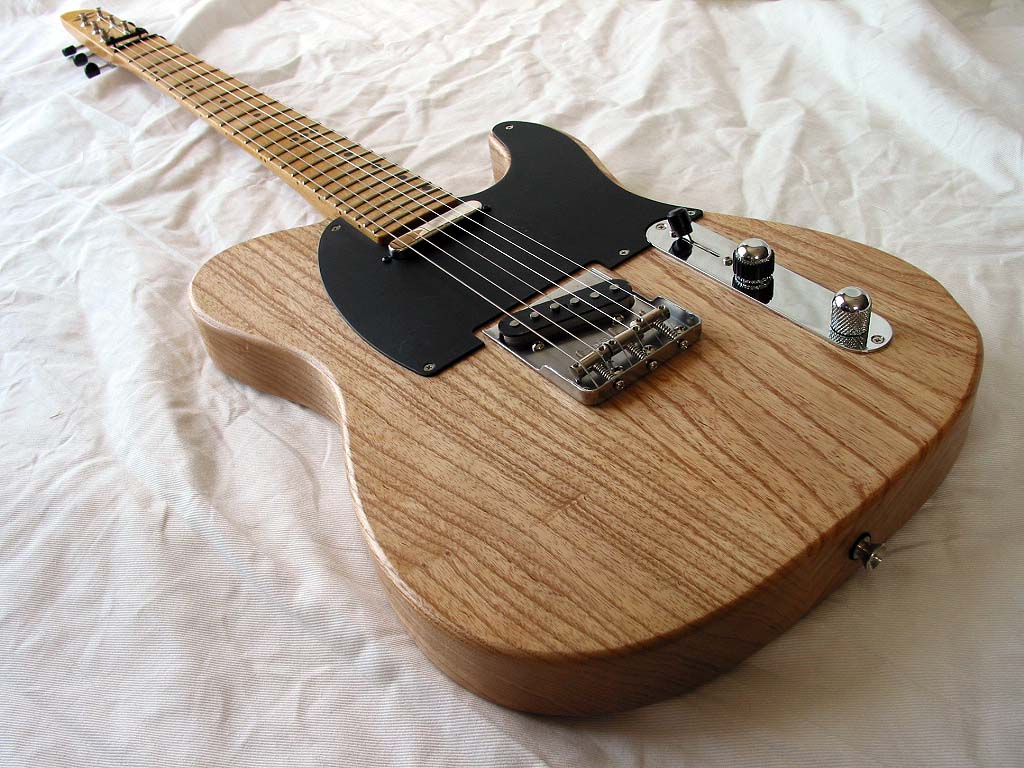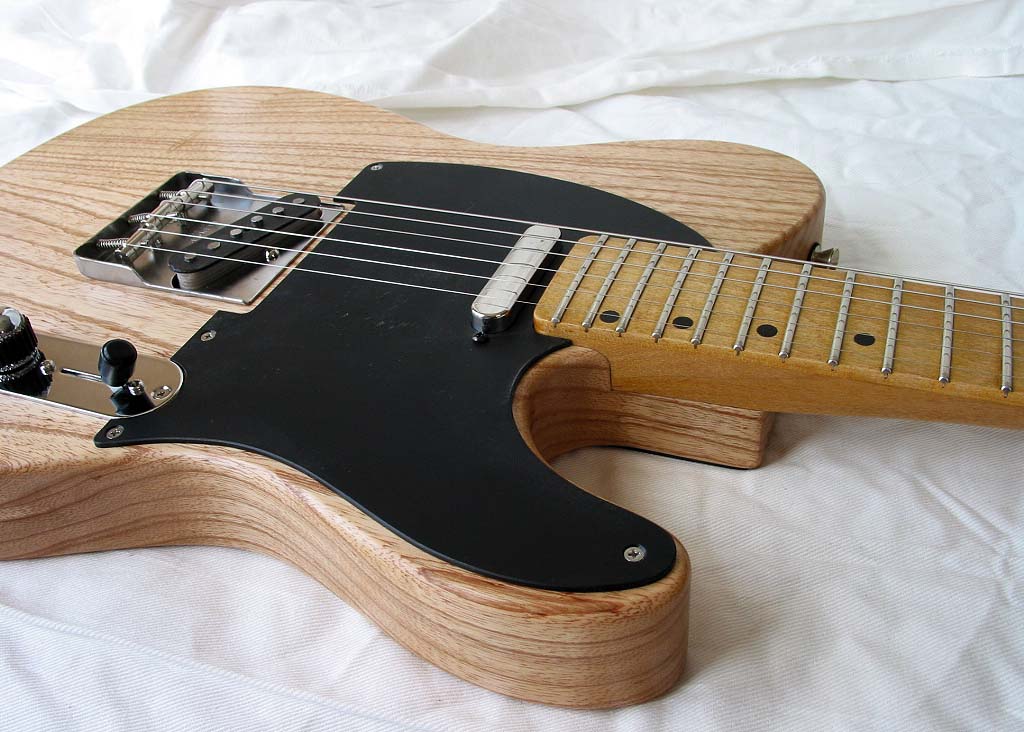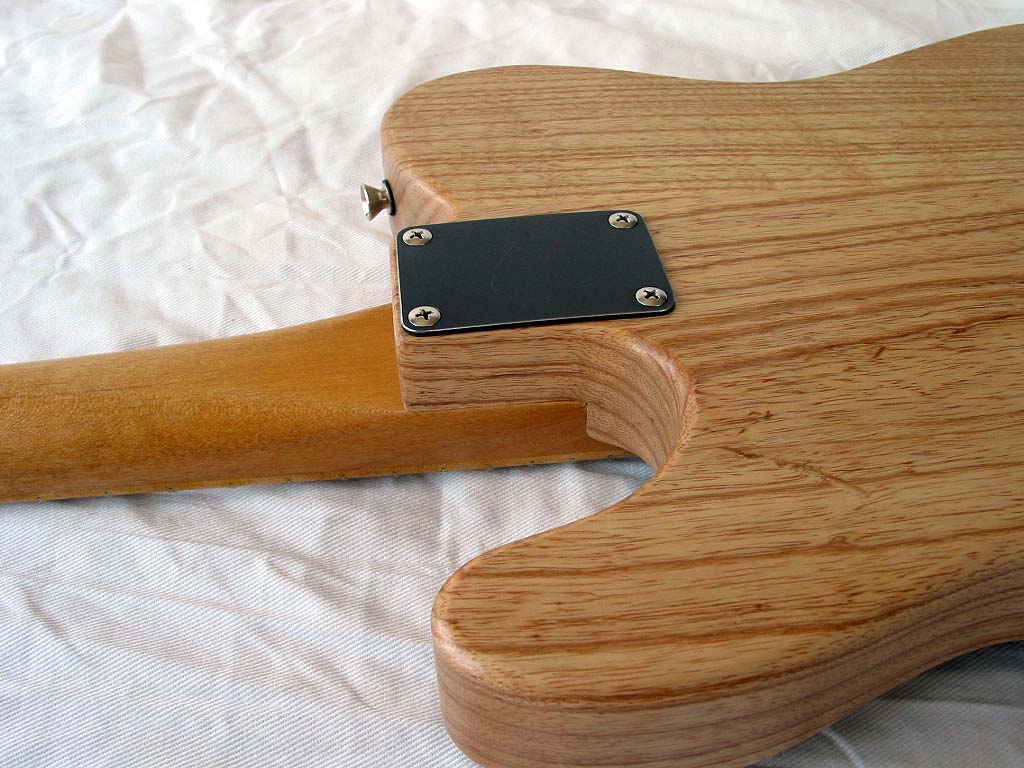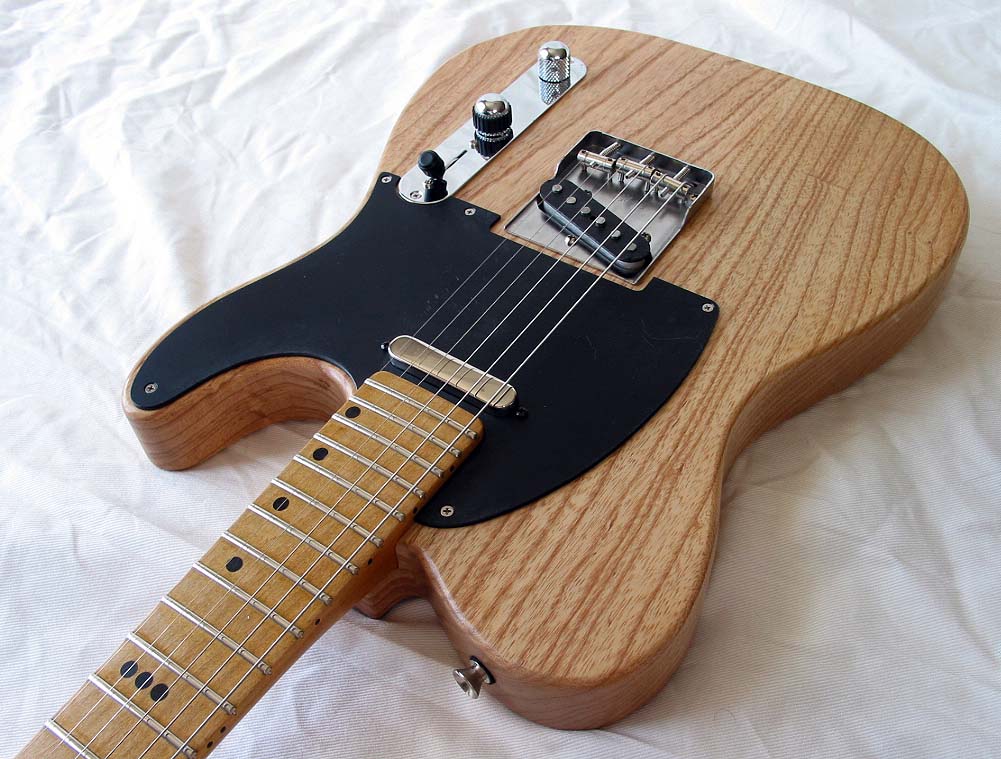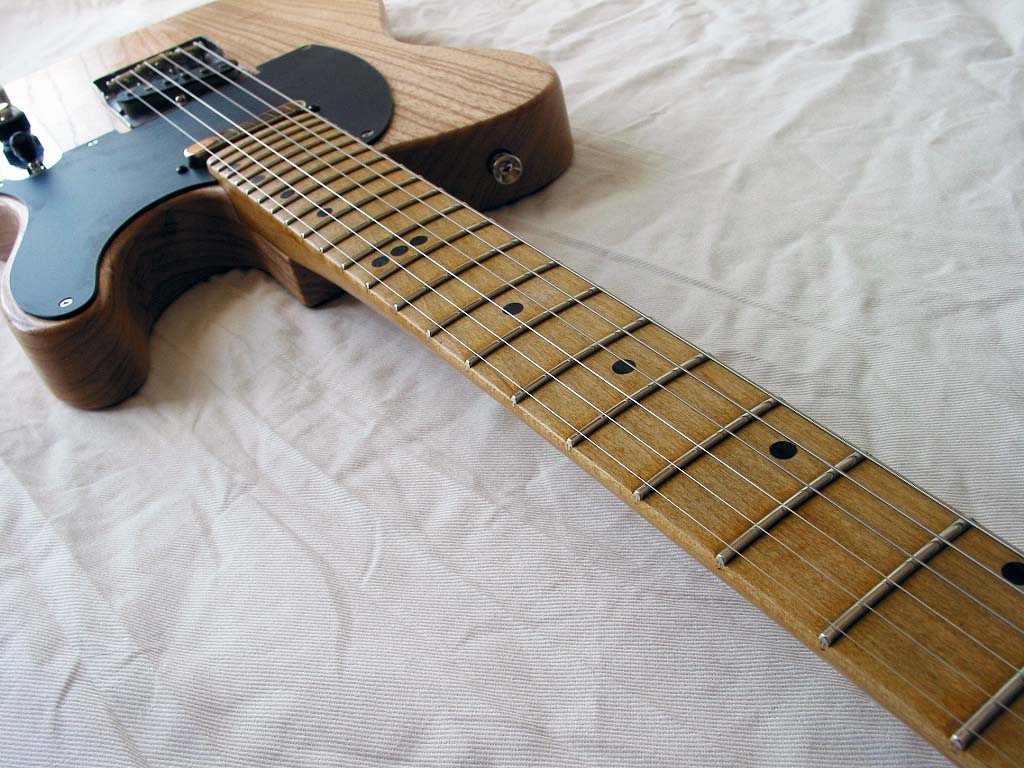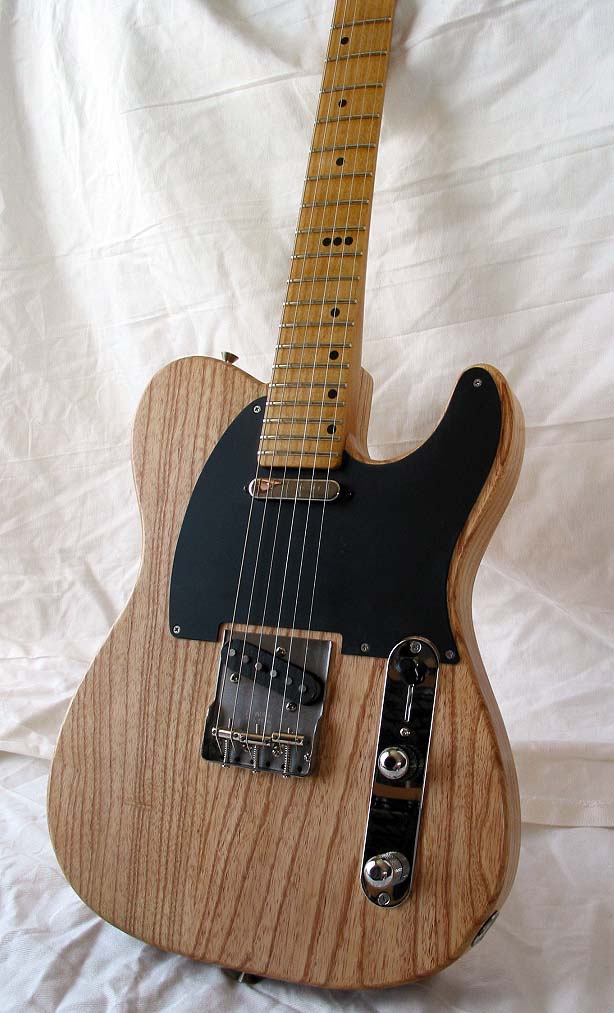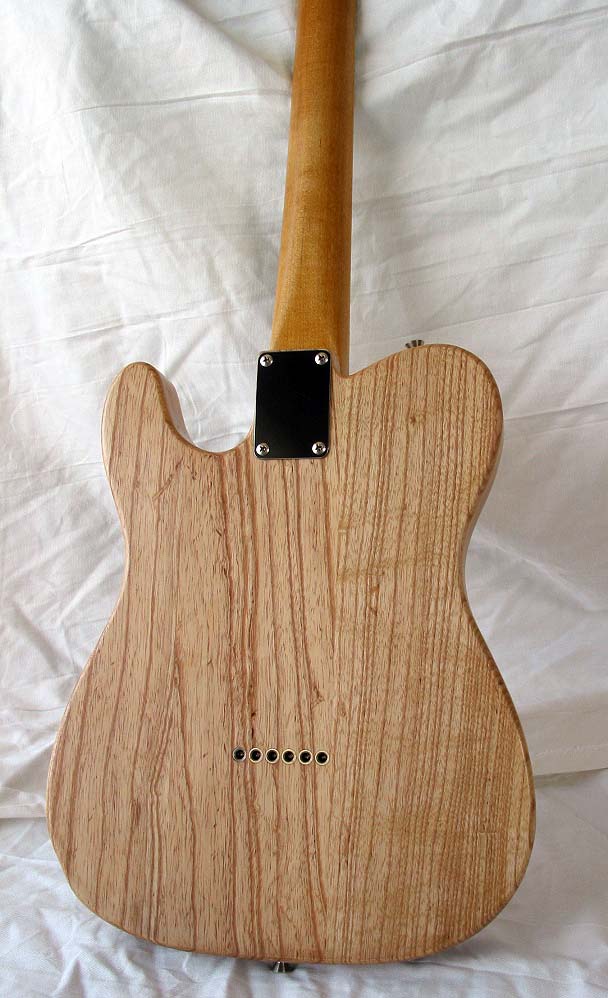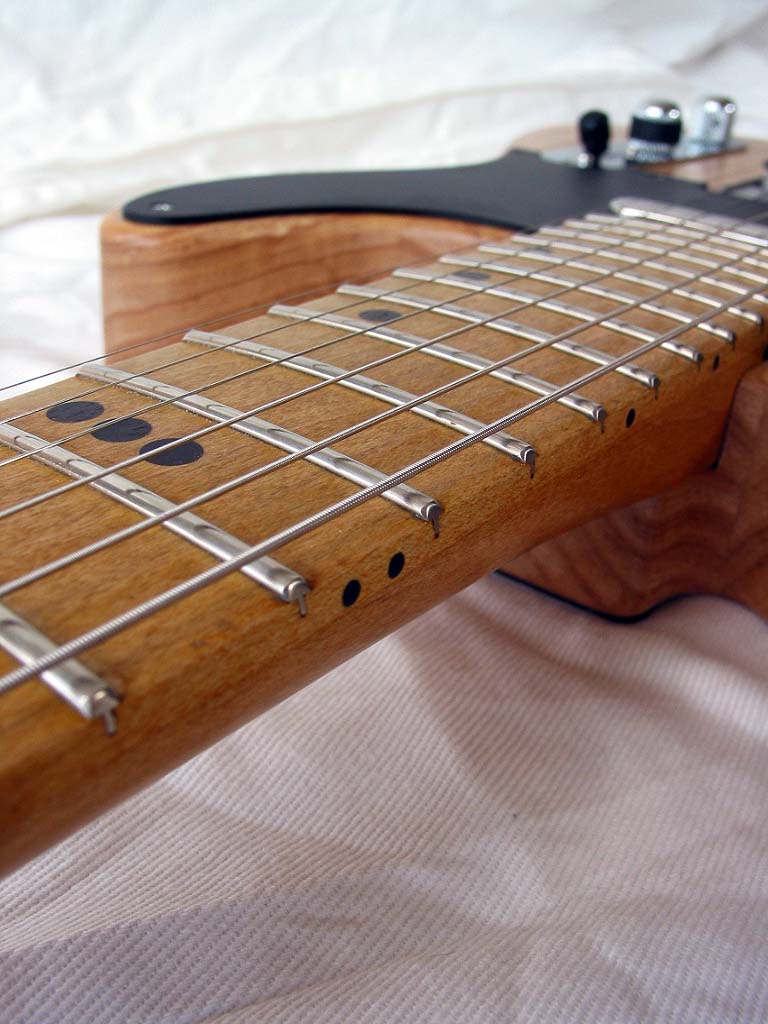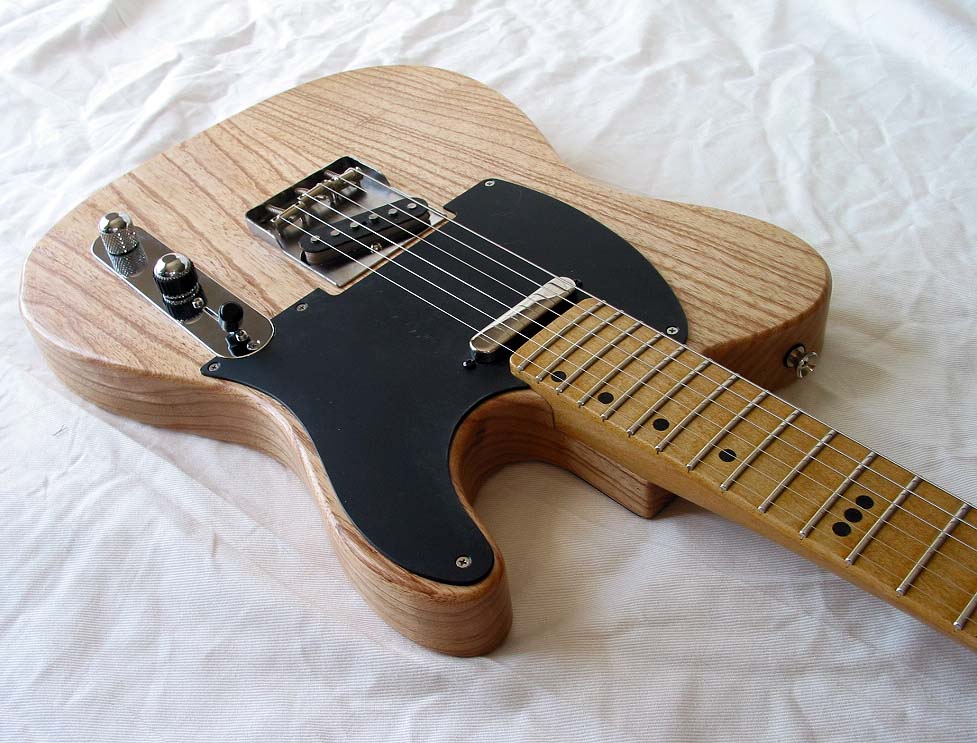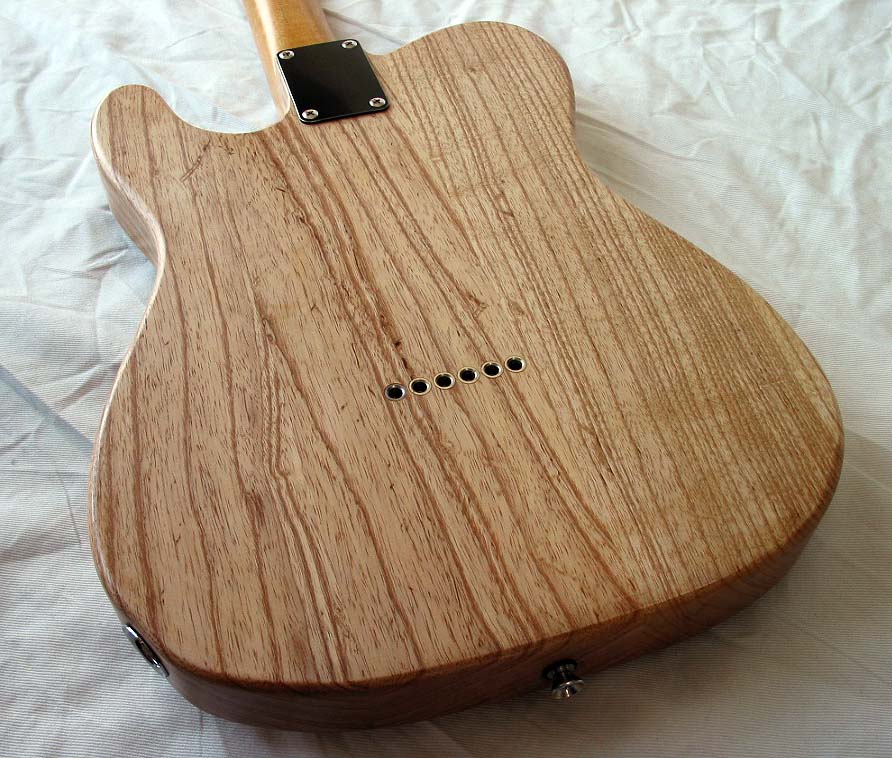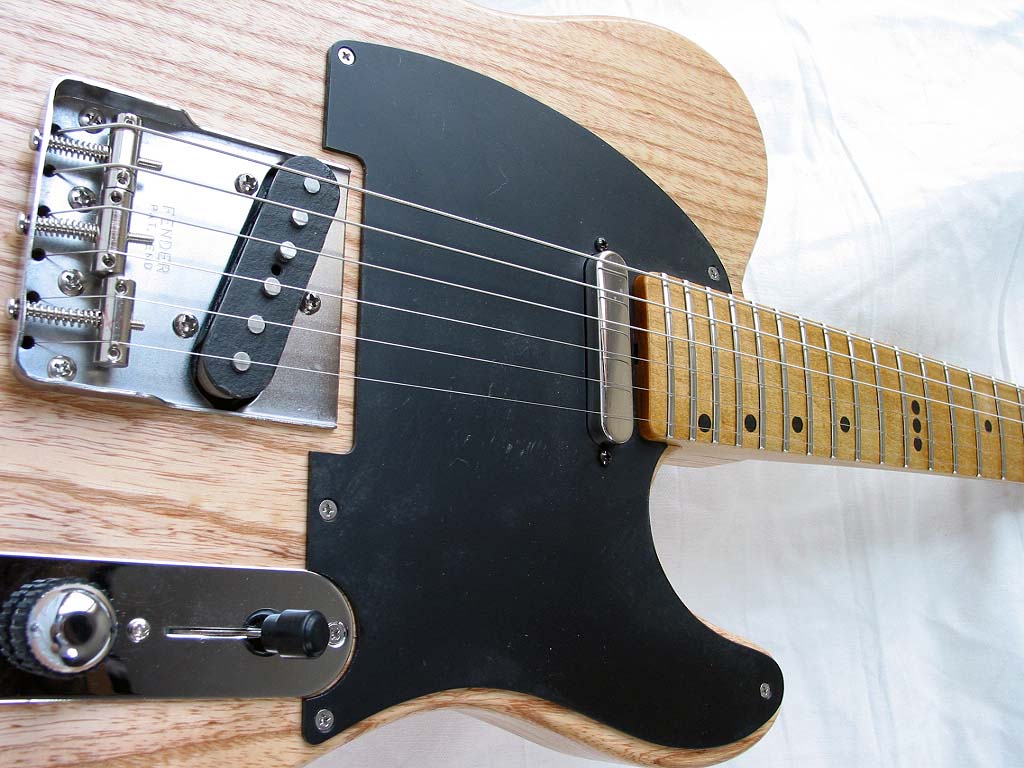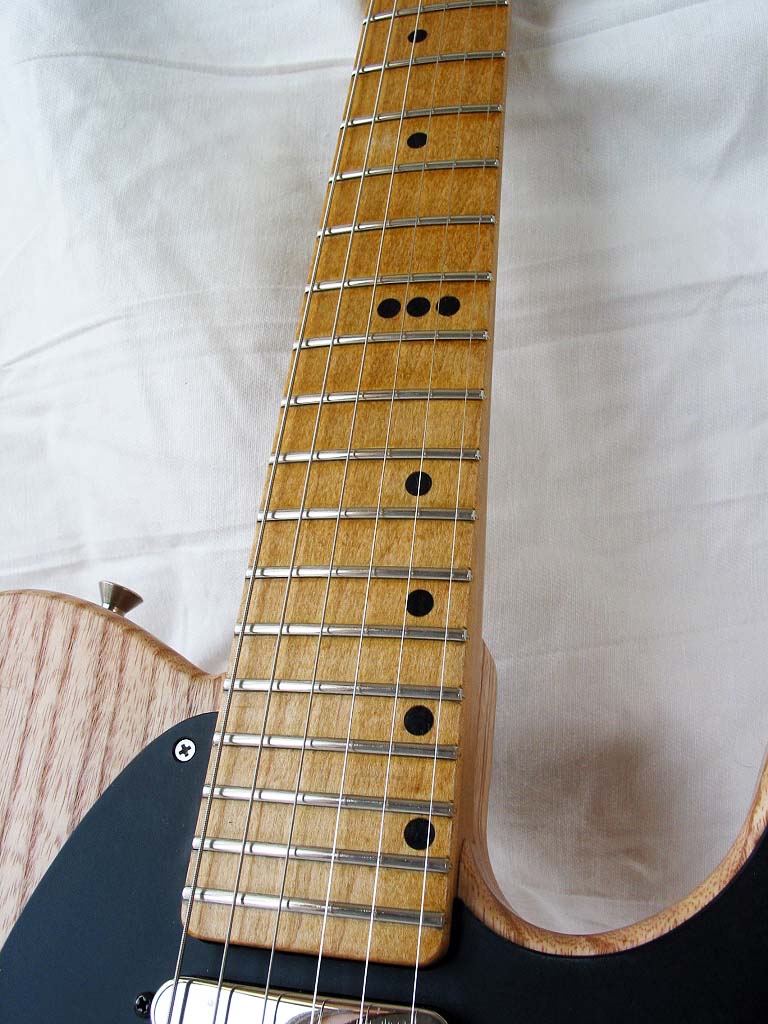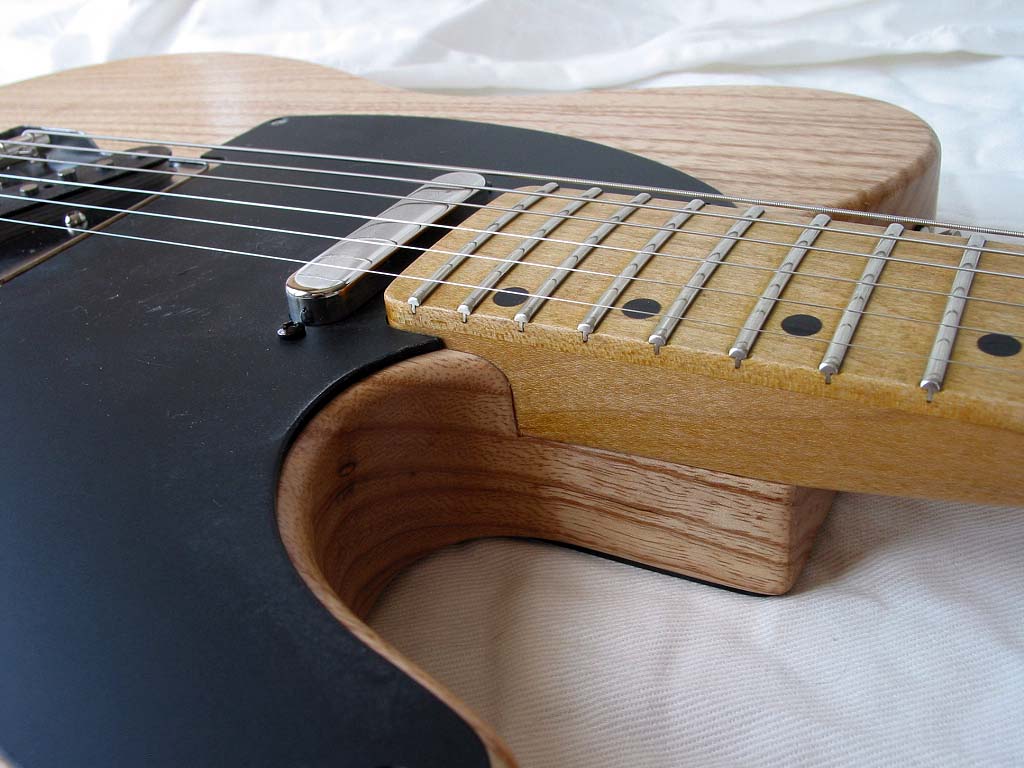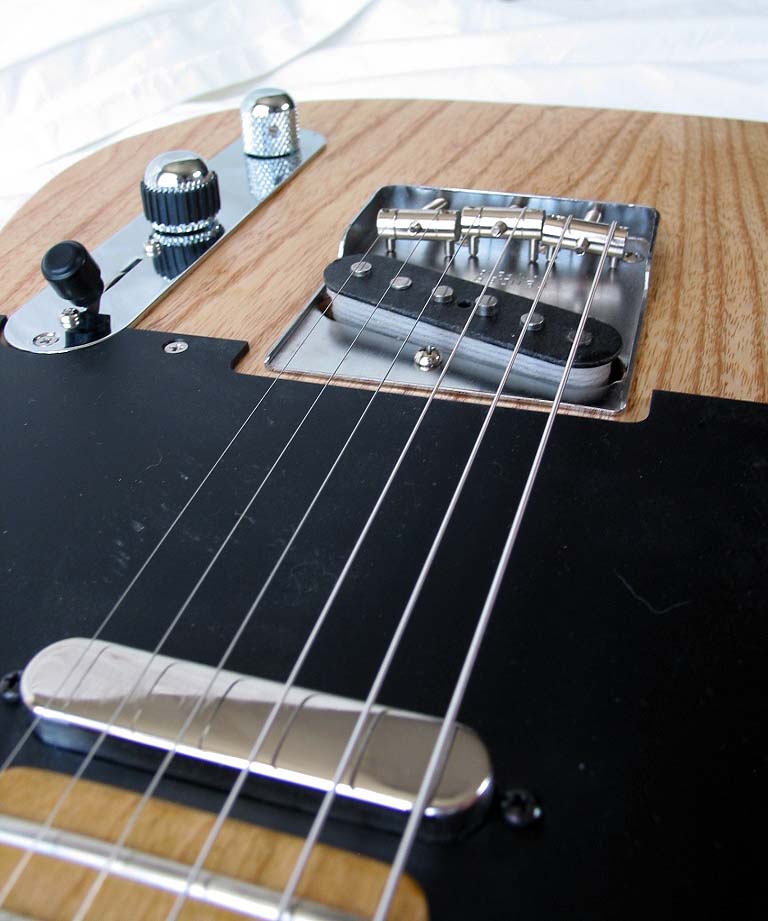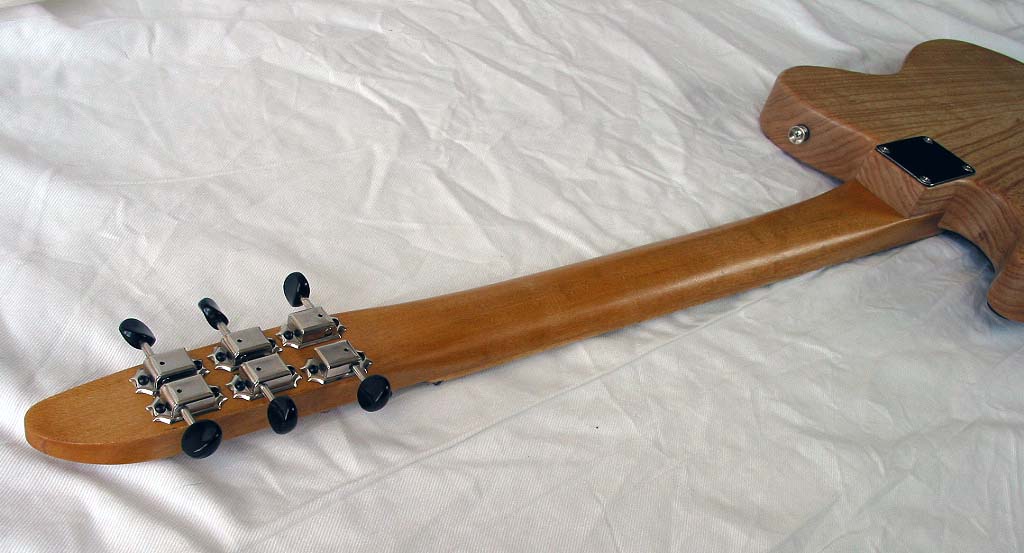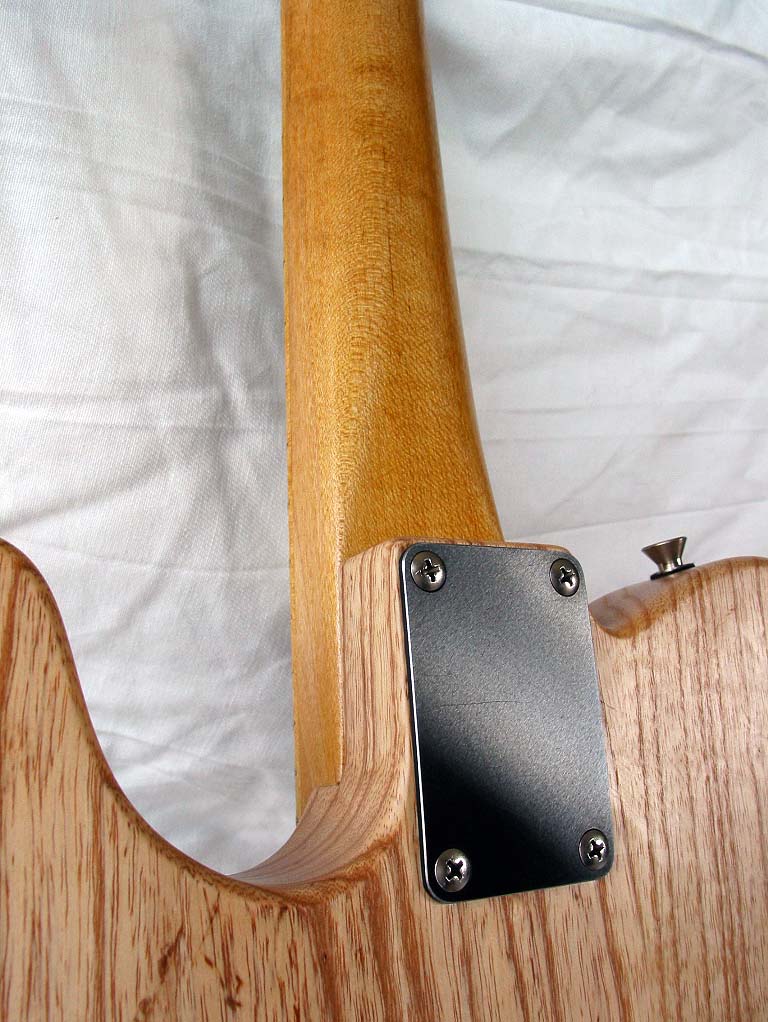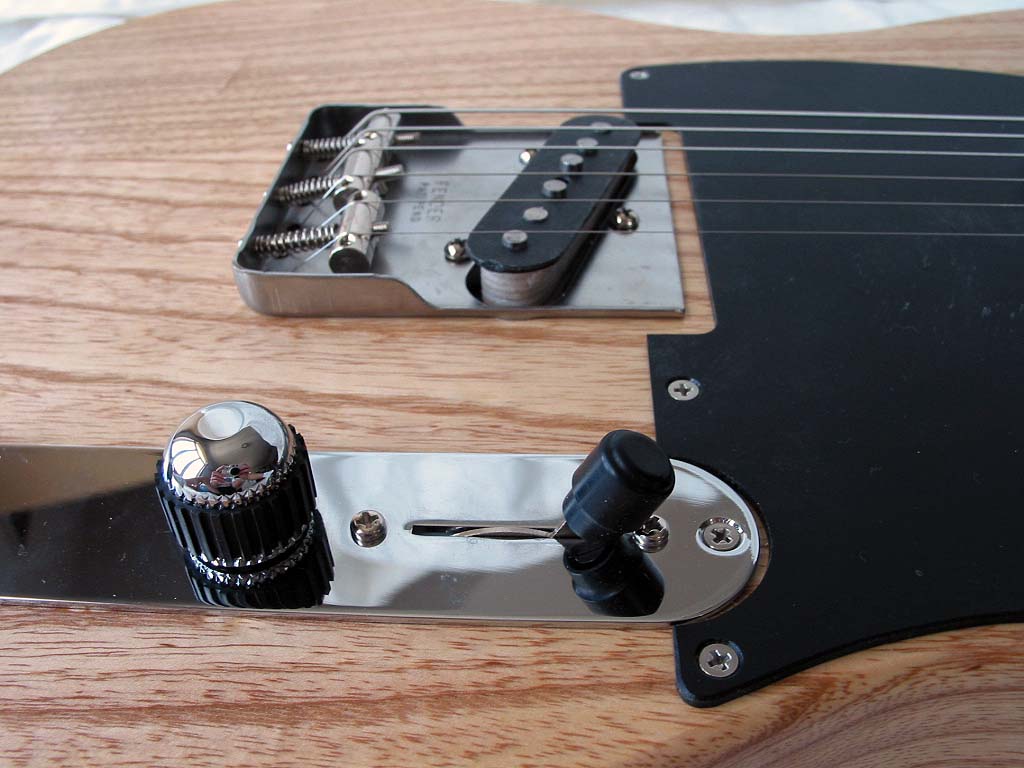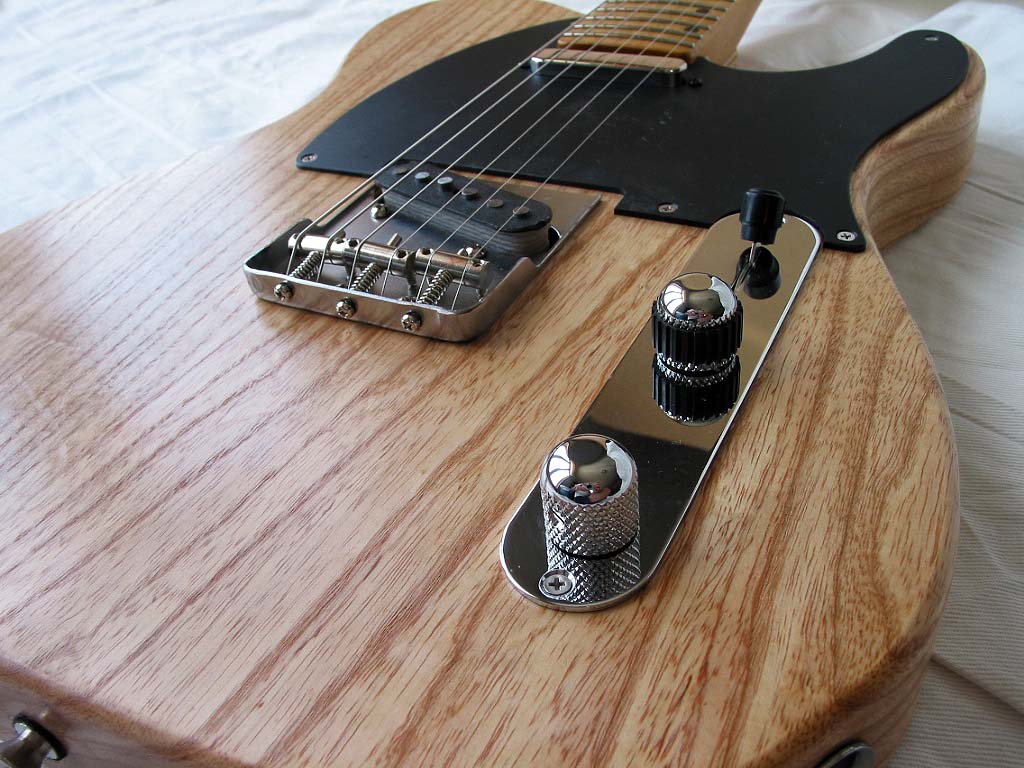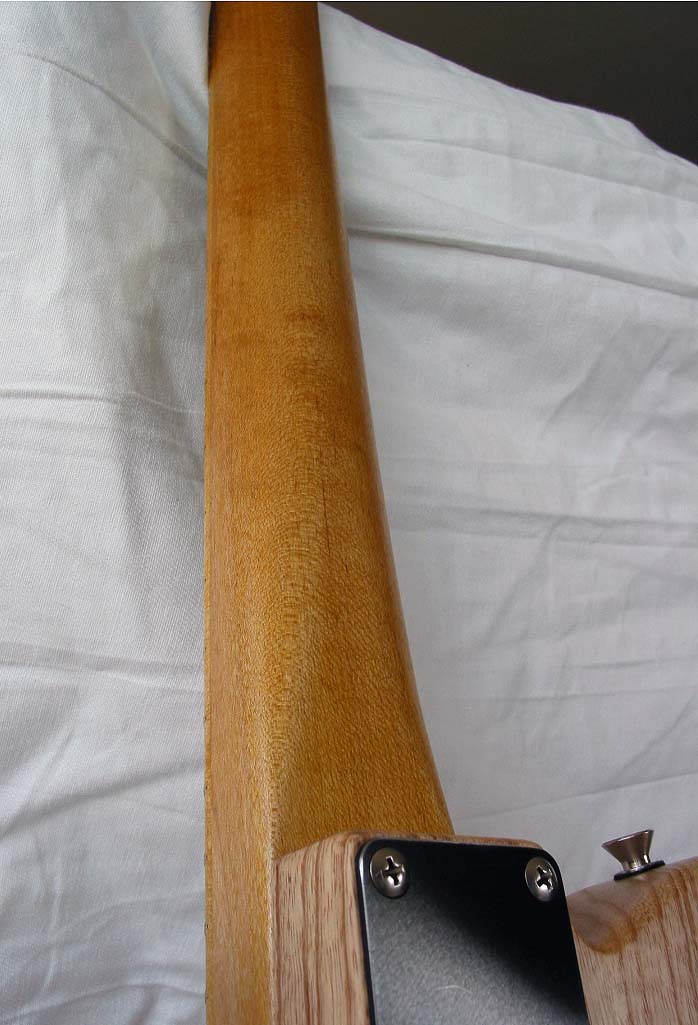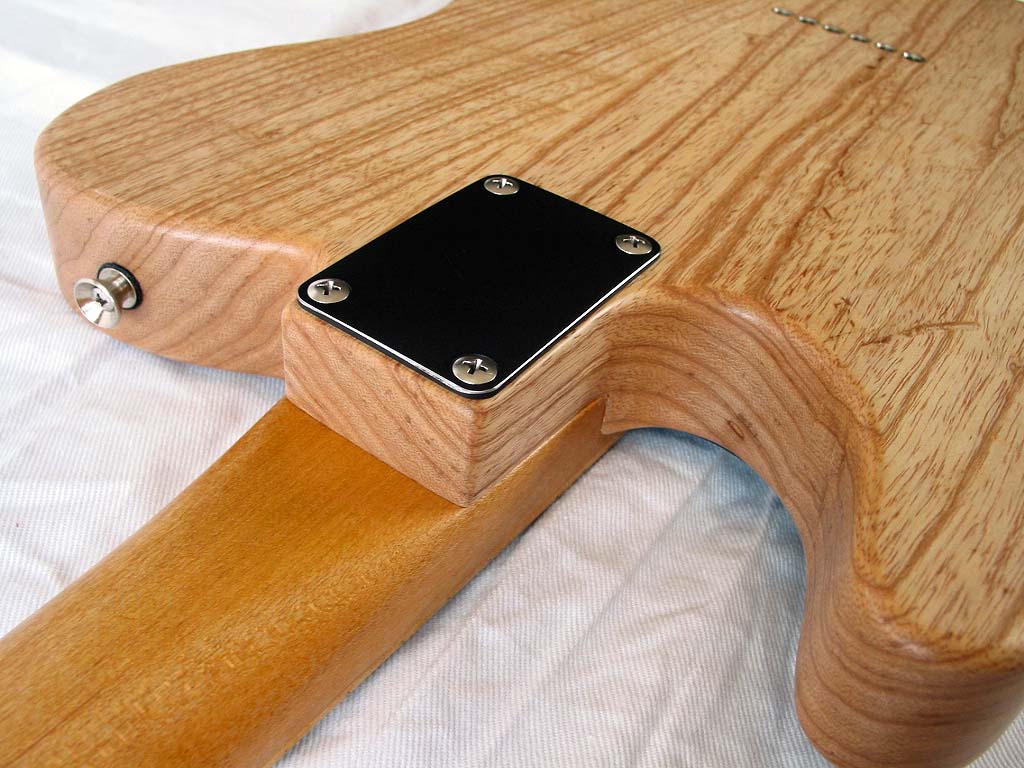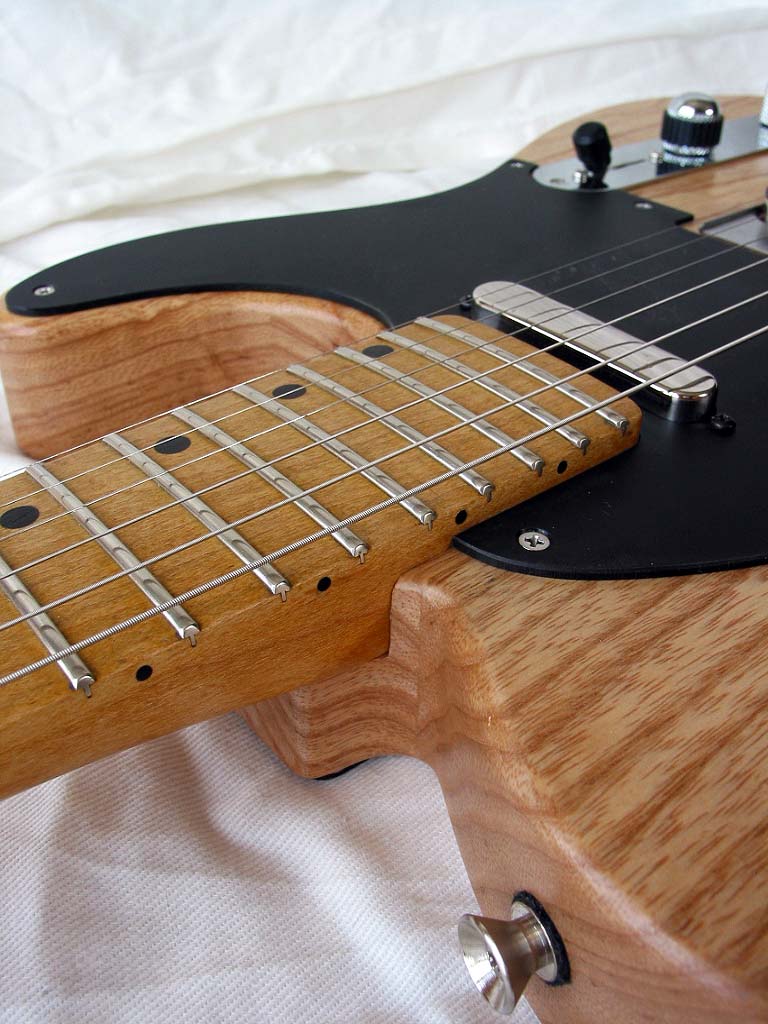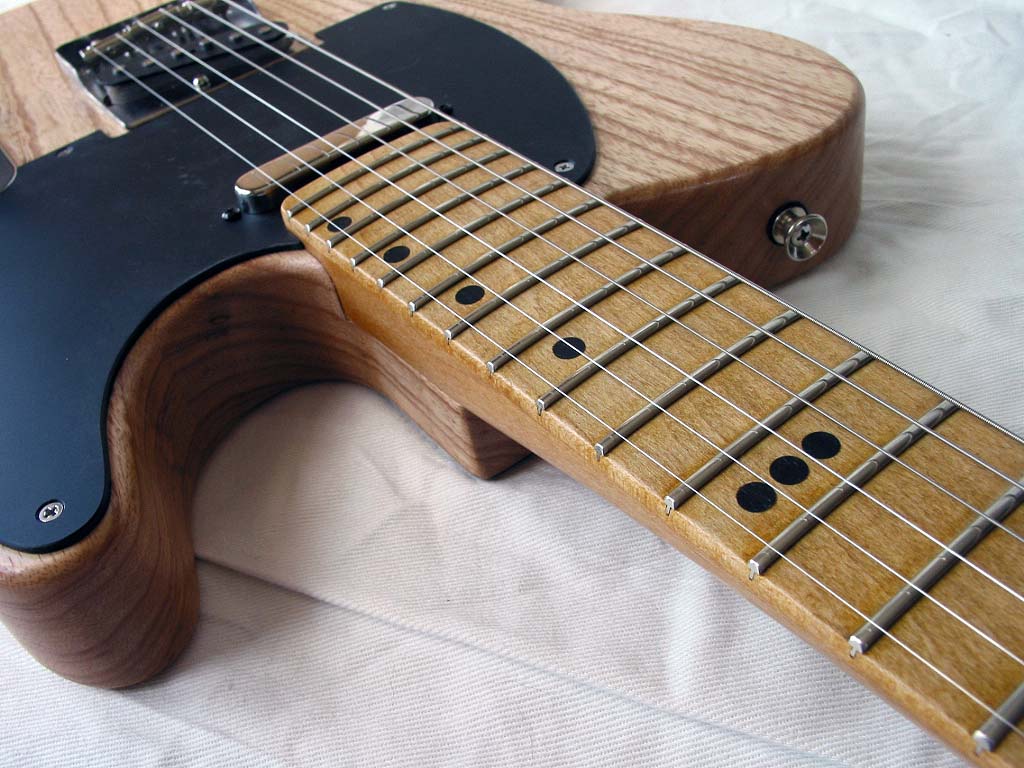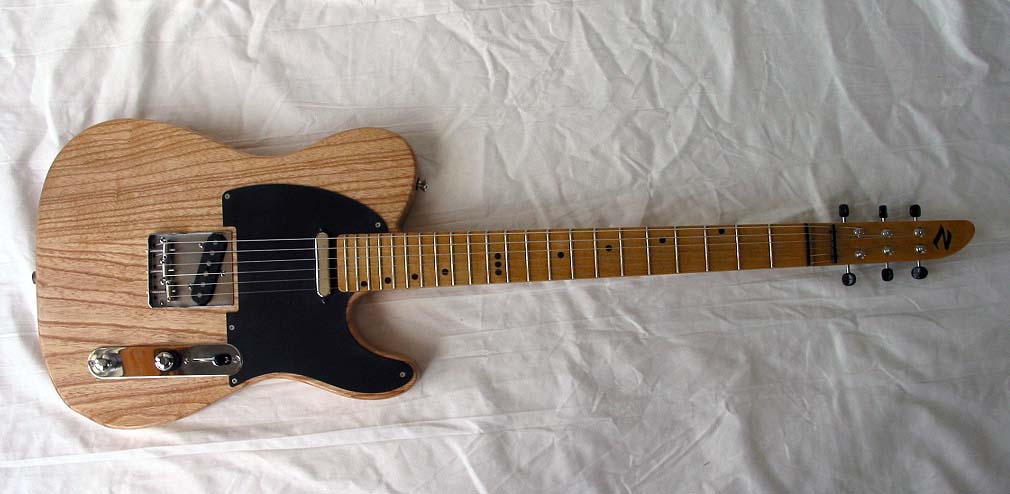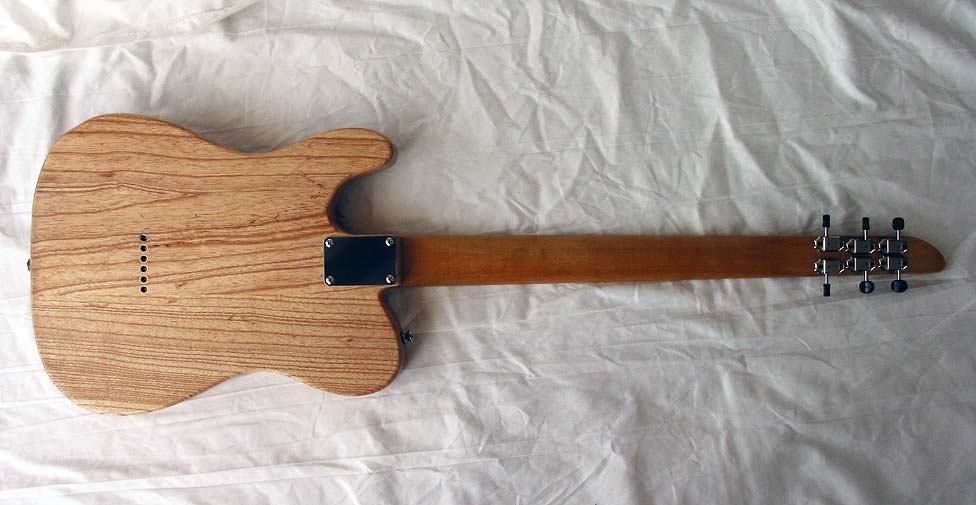Home Page 150810 Zachary/Fender Telecaster Contact
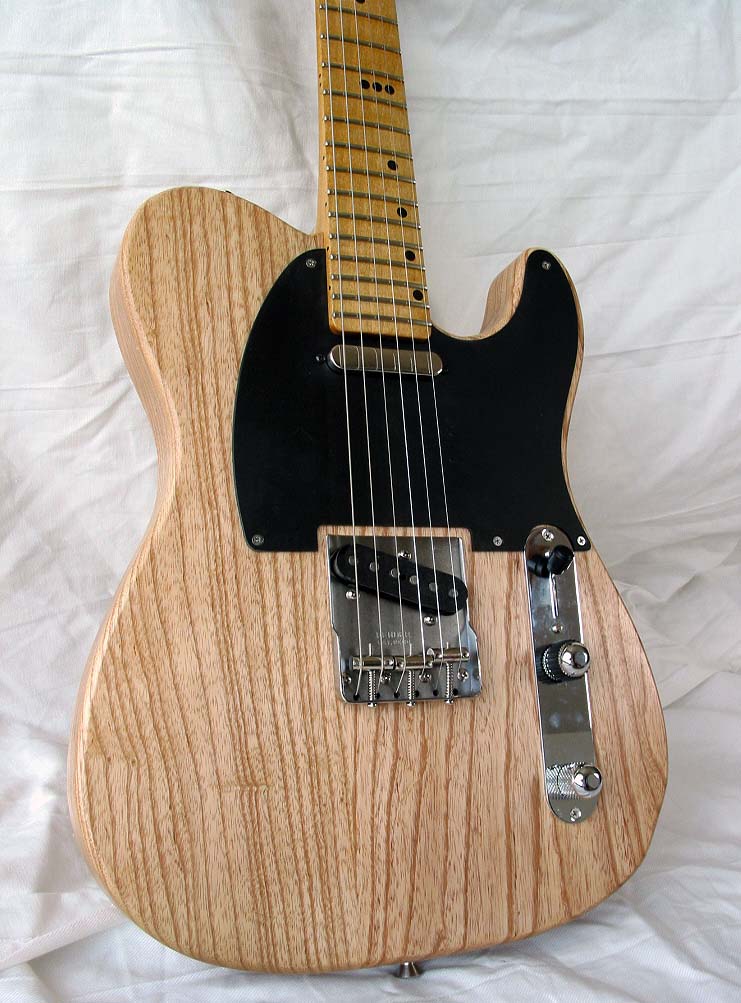
Body
Style |
Body
Wood |
Neck
Wood |
Fbd.
Wood |
Scale |
Frets |
Pickups |
Switching |
Neck Joint | Strings |
Weight |
Price |
|---|---|---|---|---|---|---|---|---|---|---|---|
Telecaster |
Top: |
Maple |
Maple |
25.5" |
22 Large |
Neck: Original Bridge: Feder Tex Sp |
3-way pickup select Master Volume |
Screwed |
ZOG 9 RW |
7.3 lb |
NFS |
This is an amazing piece of information I found.
The late '70s were a difficult time for the American guitar industry. Thanks to a seriously undervalued yen, high-quality Japanese-made guitars were selling for roughly half the price of comparable American-made products. Faced with declining market share around the globe and shrinking profits, U.S. manufacturers scrambled to trim costs and close the price gap with their Japanese competitors. This entirely rational reaction set up an industry-wide "left brain/right brain conflict." The "left brain" analytical types argued, "If we don't address cost issues, we'll be out of business. Nothing else matters." The artistic "right brain" crew countered, "But if our products lose their soul and musical appeal, we'll have nothing left to sell."
This conflict played out in virtually every company in the industry, where well intentioned artists and accountants squared off about how to remain viable in a difficult market. A long-ago issue at Fender typified these debates. In the drive to bring down production costs, some Fender manufacturing executives had concluded that applying a thick polyester base coat to the guitar body would reduce the need for a lot of hand sanding, thereby cutting direct labor costs. They were supported by a thorough accounting analysis that demonstrated huge savings. Presenting the dissenting view were Freddie Tavares (1913 - 1990) (was an American musician and inventor. Born in Hawaii, Tavares is perhaps best known for his role in designing the Fender Stratocaster and other Fender instruments and amplifiers, although he was a virtuoso on the steel guitar, playing on many hundreds of recording sessions, radio broadcasts and movie soundtracks) and Bill Carson (1926- February 15, 2007) (Carson was a California country-western guitarist for whom Leo Fender originally designed the Fender Stratocaster electric guitar in the early 1950s.) Both were accomplished guitarists in their own rights and close associates of Leo Fender (1909 - March 21, 1991), and they said categorically that the polyester killed the tone of the guitar. When it came to making a final decision, subjective tonal considerations took a back seat to immediate cost savings, and the polyester process was adopted. Although Carson and Tavares lost the argument somewhere back in 1979, years later they were ultimately vindicated. People like Tavares and Carson didn’t know much about cost accounting, but could immediately recognize a musically superior product.
The Music Trades
A few years ago I acquired this Japanese-made Fender Telecaster 1952 Reissue. I had mixed feelings about it and thought it was such an unfortunate waste for anyone to ruin a guitar, which would otherwise be quite descent. I wanted to like it but it was impossible to do so. The plastic finish on it was grossly thick, soft and looked and felt artificial; exactly what I don't want. The neck was the usual vintage-style narrow neck, with thin and low frets, exactly what I don't want. The fingerboard also had the thick plastic finish on it, so when you played those thin/low frets, you're fingers would be right on the plastic-covered fingerboard; and you know what that feels like. Not a great feeling at all. It's kind of like making love to a plastic mannequin, which I never tried but can only imagine. I am guessing its not too satisfying or much of an organic experience.
What I did like about it was the surprisingly nice wood which they used for the body. The body is remarkably light weight and very soft Swamp Ash. Although the body was made of three pieces, the grain was matched well to make it almost look like a one piece body. I kept thinking why guitars cannot be mass produced as they were in the 50s. Only a corporate executive in the music industry could tell me why. If Fender and Gibson could consistently make over a hundred thousand guitars per year in the 50s, using manually operated machines and skilled labor (not CNC), then why can't it be done now? If true air dried Nitro Lacquer could be used on all guitars exclusively, why not now? Why do they need to lie about using Nitro Lacquer, when obviously today's "Nitro Lacquer" on even the most expensive custom shop models, is nothing like the real thing. Its not lacquer at all. Who are these liars kidding? The stupid guitar moron of course. They have you figured out, believe me.
So I was faced with a dilemma about what to do with this sorry-ass guitar. I obviously could not play it the way it was and it angered me that they had ruined this Telecaster in such a mindless and unnecessary way. The guitar industry people must hate me for opening your eyes. They want to keep you stupid, while I want to make you smart. Can't you see the paradox? The stupider they keep you, the more money they make. The smarter I make you the more you will appreciate and understand what I do. Mass production guitar manufacturers and I have vastly different agendas. Unfortunately the group of people I cannot count on becoming smart about guitars are the pro players and the guitar media, since they are only looking for advertising and endorsement money. I am technically working against the requirements of pro players and the guitar media. I pay them no money at all but instead bring awareness to you, the smart guitar player.
I had to make a decision about what I will do with this guitar. I would either sell it, or keep it. But if I was to keep it, I would need to turn it into a Zachary guitar. Not an easy job. How would I do that and why would I even bother doing it, since I can always make a Z-F1? Here comes the "stupid" decision part, which only a person who cares nothing about money has the courage to do. I did an irrational thing in deciding to rework and transform this guitar completely. I spent a lot of time on this thing.
The first, the most frustrating and most time consuming task, was to remove the thick plastic finish from the body. Many have asked me if I knew how to remove this awful finish effectively but I do not know how. I tried to use the strongest paint remover I could find and it barely touched the polyester/urethane, or whatever plastic shit was on there an inch thick. It reminded me of those cheesy table tops with all kinds of stuff trapped permanently within the thick finish; coins, bugs, butterflies, pictures and other junk. They could have done that with this guitar, because the plastic covering was just as thick. Shame on you guitar industry people. You think this is what Leo Fender had in mind when he made Telecasters? Did you know that as soon as he died they switched G&L over to CNC production, after boasting for years in ads that they were not CNC? You people have the nerve to call this a 52 Reissue? Of course the dummy at your neighborhood guitar boutique would have no clue of what I am talking about.
Let me tell you, this plastic stuff they put on virtually all guitars these days, cheap or expensive, is one tough condom to remove. Think about it. walking around with a condom indefinitely would be a catastrophe. This coating must be bulletproof. I got so frustrated that I finally put the guitar through my belt sander and drum sander and sanded this shit off but at the same time trying to be careful not to damage the soft wood underneath, if I ever got to it. This crap even gummed up my sanders. This is the nastiest shit one could put on a musical instrument. You are an accessory in the crime of stupidity for buying such atrocities. If anyone knows an easy way to remove this Poly/Plastic trash, let me know, I am very curious and still searching for a method or product which works well to remove it. Those SOBs make me so angry for doing this to good wood and what may be otherwise descent guitars. Its like a sacrilege and whoever is involved with this atrocious act should go home from the guitar factory in shame, no matter at what factory or in which country you work in. Its like as soon as the guitar goes into the paint booth, the game is over. The guy has ruined the guitar from that point on. Usually its one guy who is the executioner; its the paint guy. From that point on the guitar is lost and useless. It can hang next to a PRS.
As mentioned, this restoration I decided to pursue was stupid and if you add up the hours spent on it, this guitar cost me a fortune. However, I was angry once again and I was challenged. You put anger and a challenge together and its a recipe for monumental achievement. I don't see people getting angry often any more. The new progressive human is not brave enough to get angry or they get angry over meaningless things, like their feelings being hurt, while the world burns around them.
I just didn't want to waste or get rid of this nice body wood and I took it on to save it; to make this guitar into what it should have been in the first place. Along the way, I corrected many Fender design problems as well, like the narrowness of the neck, not only at the nut but also at the heel end. On Fender necks there is never enough spacing between the fingerboard edge and the outside strings. What were you thinking Leo and why didn't anyone fix it since? The strings fly off the edge of the fingerboard because the string spacing needs a wider fingerboard. The neck pocket had to be widened proportionally on both sides to center the larger Zachary neck. This was tricky work, since I had to work with a finished product and not starting from scratch. It made it infinitely more difficult. Everything I do is tricky work and only someone with my god-given talent and skill can pull it off. At the same time I also had the opportunity to make the neck pocket longer, which is desperately needed to improve the unstable Fender neck joint. What were you thinking Fender? The neck pocket also had to be longer and wider in order to accommodate the longer and wider 22-fret Zachary neck. The most I could do is 22 frets, given the existing limitations of the body arrangement, in order to make it fit the existing Fender body. Curiously, this is the first 22 fret neck I ever made and I don't like it. I need two full octaves. So now I am forced to play the high E using the neck pickup cover as a fret. What were you thinking Leo? This also gave me the opportunity to increase the length of the neck screw arrangement, thus increasing the stability of the neck mounting area, resulting in much better neck joint stability. Still not a Zachary neck joint but much better than original Fender. Fender missed that. I had a custom neck plate made and also had it heat treated to make it harder and less prone to flexing when the screws are tightened. Was that a good idea Fender? What bugs and surprises me is that the players around him did not give him proper advice in terms of the details. Even better, I want Eric Clapton to get down on his knees to worship me for all that I do. I am sure he would do it if I paid cocaine money but I don't, sorry.
Instead of mounting the pick guard and control plate with wood screws into the soft wood, which would strip and rip the wood out in short time, I inserted metal bushings into the wood and used machine screws instead. Very clean and reliable arrangement, I use often. Yes, I know, you had thought of this already 22 years ago and your uncle came up with it 20 years prior to that. Yes, big shot tinkerer, you are too smart to even read this website and could teach me a thing or two. I can hear it now. That's why you hang out on circle-jerk forums 24/7, instead of dropping your drawers and actually showing what you are made of and what you can do. Circle jerks are nasty little pricks, losers in life and can only feel important under anonymity on a trashy vacuous chat site.
I replaced the bridge pickup with a more powerful Fender Texas Special and rewired the electronics eliminating the tone pot from the bridge pickup. What idiot would use the tone knob on a bridge pickup anyway? Oh, I forgot, Eric Johnson does, that should tell you everything you need to know about him. He had his own signature Fender model and if you own one, get off this site and get together with your circle jerks and start jerking.
Another important details, which pickup manufacturers and also players are ignorant of, is the correction of the pole piece stagger for the bridge pickup. They are playing with a pickup stagger designed to be used with flat wound strings and a wound 3rd string. How stupid is that? Leo got it right after a few tries but he designed the stagger for the strings of the day. I took the pickup apart and repositioned the pole magnets. The pickup manufactures know you are stupid about guitars and are too afraid you may not buy anything which is corrected and does not contain the original flawed designs. The defining characteristic of the guitar industry is to maintain flaws wherever possible, due to ignorance and disinterest and in order to maintain nostalgia and thus sales from the ignorant consumer. Let's build a 52 reissue Telecaster and keep all of its flaws but we will give it a thick plastic finish and the morons will never know the difference.
Its sad that some old timers and more experienced guitar enthusiasts may know what I have done here and why. However, the average younger player would have no clue, that a guitar wasn't covered in plastic in the past and shouldn't be now either. They don't even know what a guitar feels like without plastic. Feeling plastic is now become desirable I guess and if it says Made in China on it, then even better. These are children of plastic or Plastic Children. They get their hormones from the new food supply. That's why they are deformed. Future generations may not even know what a real guitar should feel like. Guitars are morphing into an inexpensive mass produced toy and an entertainment controller, loosing all connection with being an organic musical instrument based on a legacy of centuries of artistic creation. Craftsmanship, the instrument maker, his shop and his tools, are now unknown and unrecognizable to the guitar consumer, as will soon be the fate of the guitar player also. The topic here is about preserving what Western Civilization had offered in the area of arts and craftsmanship. Its disappearing fast.
Ultimately this is not about this guitar at all. its about the death of Western Civilization. This unlucrative work was rather a social commentary and a political statement. Its what made me do it.
From the picture you can't really tell the difference between a Tele and a Z unless you notice the unusual headstock. The dead giveaway here is that remarkable tone. Only a Z can do that. And, of course, if one were to actually hold the guitar in his hands and play it, the difference would be like night and day. Nothing I have ever played even comes close to a Z.
And another thing, the body wood is perfect. Like the kind of perfect people who think they know something about guitars would think is perfect. This is also a little different than your usual Z.
I have been waiting a long time to see the next knotty pine Z and have been looking high and low for the perfect piece of the shittiest knotty pine I can find for a Z. No luck so far, but my day will come. Ted Noize
Very interesting project. Z neck plus highly modified Fender body. Never thought I’d see that. Sounds great as well. Eli
The fretwork, neck, and neck-body joint would seem top be most of what makes a Z work as well as it does. The rest is mostly cool factor, aside from the special pickups. So this guitar could be a great value for a player. Nothing wrong with a basic Fender that this does not fix. Frank B.
Should have known by now to not be surprised but I admit I was not expecting this one....... Nice..... Just happened to be on YouTube looking at something else when I saw Alex in one of the related features........ Mark
Saw your Hybrid Z – loved it. Was happily surprised to hear you released it from it’s shackles without damaging yourself. Your Z neck is beautiful as it is proportional considering you did not make the body. It actually gives that guitar a “meatier” look, rather than the wimpy neck it probably used to have.
If Roy Buchanan were alive today… I had the Honor of watching one of his last shows a few weeks before he hung himself in jail. It was at Tobacco Road in Miami. I had just recently turned 21 at the time and could finally get into a bar without hassle. I actually went alone and enjoyed every second, (since I had no friends to distract me). It’s a small venue, I must have been 20 Feet away from him. His performance blew me away that night. I always think of him when I see a Telecaster.
I also got a real kick listening to the R480 050309 on youtube. I thought the damn thing was plugged in! I started watching/listening to the video before I had a chance to read your comments! Blew me away.
Stay strong. Yordys Try that with something else, like a PRS and see what you get. Alex
Hey Alex, just dropping you some needed praise. It's been a while since I last made a comment but believe me when I say I'm on your site daily checking the guitars out. 150810 is as real a Zachary as any of your other creations and I think I can explain why. You usually start an idea, sometimes based on just a piece of body wood that strikes a spark in your imagination. Strange wood, buggy wood even dumpster wood. My point is it's "discovered" wood ready to be worked or saved from it's current condition. If the Ikea Butcher block is a Zachary, then 150810 is a Zachary. You described how much work it was to remove the awful finish and create a new neck slot. You deserve credit for working this body wood by making it official and fire branding the Zachary logo on the body. Those of us who frequent the site will accept 150810 as a Zachary and any naysayers who speak up can be shot down with the fact that this guitar is handmade and way closer to perfection than the Fender it started out as. Keep doing what you do. Michael S. Bedford,NH
Fender Telecaster Tele 52 Reissue Electric Guitar
